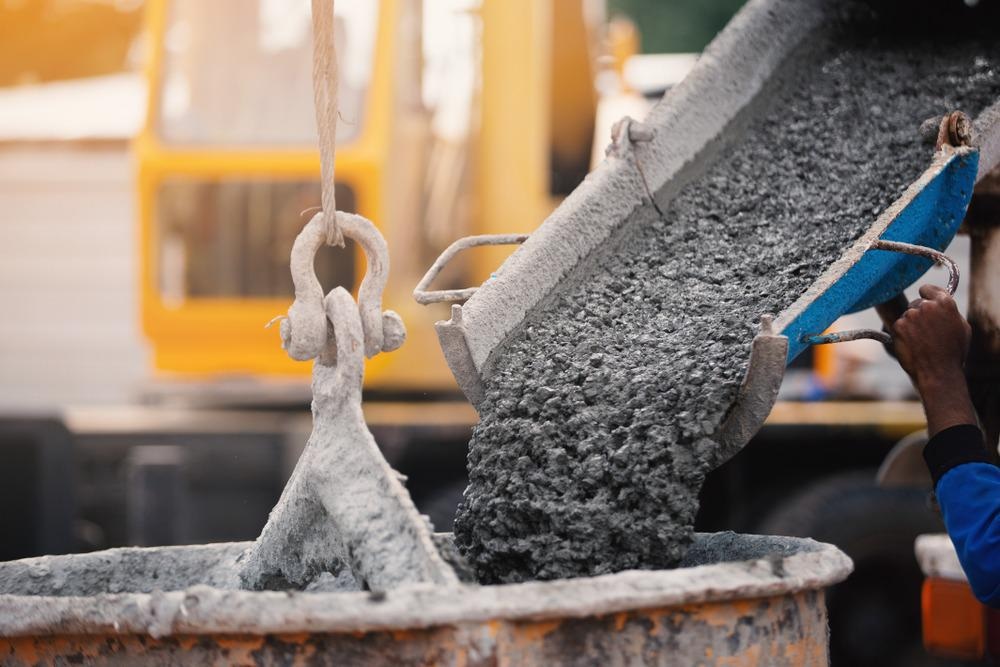There is little dispute of the fact that concrete plays an important role in the development of human society; however, in terms of limiting its environmental impact, there is still work to be done. Now, a team of researchers, writing in the Chemical Engineering Journal, have developed a carbon-negative bio-char augmented concrete that could influence the future of the concrete industry.

Study: Biochar-augmented carbon-negative concrete. Image Credit: P.KASIPAT/Shutterstock.com
It is well-established that the concrete industry and use of cement is one of the most emission-intensive industrial processes on Earth. Concrete is the most widely used human-made material on the planet shaping most of the built environment; however, it also has an immense carbon footprint.
As excessive anthropogenic carbon (CO2) emissions threaten ecosystems as the main driver of the current climate crisis, many nations have set ambitious goals to reduce greenhouse gas emissions by at least 55% by 2030. The European Union has set a net-zero goal by 2050, while China has set a target of carbon neutrality by 2060, as a result of which many countries are offering market-oriented Carbon Emissions Trading Scheme (CETS) to offer a financial reward (or penalty) to those who emitted below (or beyond) the permissible limits.
Biochar as Carbon Capture
In order to meet carbon neutrality targets, carbon capture, utilization, and storage technologies should be developed. According to the Intergovernmental Panel on Climate Change, biochar is both a safe and promising solution to facilitate carbon neutrality.
“1 tonne biochar could trap 2.0-2.6 tonnes of CO2. Biochar can be produced from pyrolysis of a wide range of waste biomass (e.g., rice straw, wood waste, food waste, sludge, and manure) under limited availability of oxygen, after which carbon can be stabilized and stored,” explains co-author Professor Dan Tsang at the Department of Civil and Environmental Engineering, The Hong Kong Polytechnic University, Hung Hom, Kowloon, Hong Kong, China.
As it stands, biochar is primarily used in agriculture, but as such offers limited potential in terms of its impact in urban areas and could in fact lead to pollution in the soil over prolonged periods of time. Thus, diversifying the use of biochar as carbon capture technology could reveal its true application potential. “Application of biochar in construction materials to generate low-carbon or even carbon-negative concrete will break new ground to achieve carbon neutrality,” says Tsang.
Gradations of Recycled Glass to Replace River Sand in 3D-Printed Concrete
On average, around 4 billion tons of concrete is produced annually and its primary ingredient, cement, and conventional aggregates typically require labor-intensive mining processes that also have a significant environmental impact. Thus, Tsang and his colleagues propose the innovative use of biochar as the aggregate in a concrete dry-mix in addition to low-carbon supplementary cementitious materials (SCMs).
First Time Carbon-Negative Concrete
The researchers produced biochar blocks as biochar augmented concrete to determine the mechanical strength, and assess the life cycle and potential cost-savings of their method. Furthermore, the team created a biochar mortar in order to characterize the roles of biochar in the cement hydration and microstructure of biochar concrete.
Amongst the results, the team discovered that incorporation of biochar enhanced cement hydration via internal curing, which facilitated the formation of calcium-silicate-hydrate (CSH), which is primarily responsible for the strength properties in concrete.
Moreover, the researchers also reported for the first time that carbon-negative concrete can be achieved by incorporating 30 wt.% biochar into the mixture. “The life cycle assessment confirmed that the biochar incorporation significantly reduced CO2 emissions, and most importantly, the combined use of biochar and SCMs successfully achieved carbon-negative concrete production,” Tsang stated.
The assessments demonstrated that the carbon-negative concrete product successfully sequestered between 59 and 65 kg of CO2 and could lead to overall economic profitability. As a result of this, the researchers believe their method and biochar-augmented carbon-negative concrete will become a competitive product in the future.
The researchers state that further work and research should be done in the field to qualify durability in environmental conditions as well as true sustainability metrics and value-added features.
As future demand for concrete and cement-based materials is likely to increase as urban expansion continues to unfold around the globe, finding new ways and methods to produce eco-friendly materials is key in achieving greenhouse gas targets. Therefore, biochar-augmented carbon-negative concrete could offer various players in the concrete industry a path towards achieving their own climate goals.
References & Further Reading
L. Chen, Y. Zhang, L. Wang, S. Ruan, J. Chen, H. Li, J. Yang, V. Mechtcherine, D.C.W. Tsang, Biochar-augmented carbon-negative concrete, Chemical Engineering Journal (2021), doi: https://www.sciencedirect.com/science/article/pii/S1385894721055194
Disclaimer: The views expressed here are those of the author expressed in their private capacity and do not necessarily represent the views of AZoM.com Limited T/A AZoNetwork the owner and operator of this website. This disclaimer forms part of the Terms and conditions of use of this website.